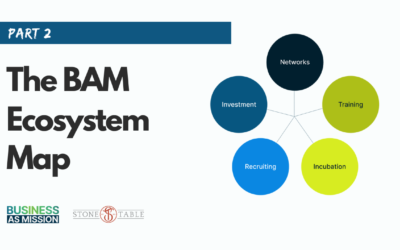The B4T Canvas: Finance

Read Step 3 of The B4T Canvas Here.
Step 4: Is it viable?
Last, and all-to-often neglected, step 4 of the B4T Canvas is financial analysis to determine the viability of the business model. It has been said that for B4T, profit is like blood. You don’t want to think about it. When everything is running normally and as it should, you hopefully don’t have to think about it. It takes up so much time and energy to consider. But, when you’re bleeding out… you kind of have to think about it.
 Incomes. Incomes are quite simply the inflows of revenue into your business. You should use this section to jot down a few of the price points for product/service variations listed in step 3. To get a quick analysis of your business model, multiply your estimated daily sales of each product variation by their sales price. The result is a ball-park figure for your daily gross revenue.
Incomes. Incomes are quite simply the inflows of revenue into your business. You should use this section to jot down a few of the price points for product/service variations listed in step 3. To get a quick analysis of your business model, multiply your estimated daily sales of each product variation by their sales price. The result is a ball-park figure for your daily gross revenue.
It is fair to think of your ministry impact as having kingdom returns, and this is certainly a revenue to track your expenses against. If you have expenses directly tied to your ministry impact, you may nest them under a $0 income header that has kingdom returns. For the purposes of taxes and government reporting however, this sort of application will really only make sense for internal use.
Expenses. As you track your incomes, it is incredibly helpful to define expenses by category of income. We call these expenses directly associated with incomes “direct costs.” Go figure, right? You might choose to list them as fixed and variable costs.
Suppose you have a business selling shwarma on the street corner. You might list the food ingredients as variable costs under shwarma income. If it is sitting in stock you call it inventory. If it is sold you move it from inventory to cost of goods sold (COGS) on your financial statements. Your fixed costs will be things like rent, utilities, permits, and interest payments on financing.
It is important to determine the percentage of costs that are associated with each sale. That gives you your gross profit margin. Once you deduct your fixed costs, now you have your net profit margin. Suppose your gross profit margin is 20% and your net profit margin is -2%. Undoubtedly you are losing money. 2%. But are you losing 2% of every sale? No, and that’s an important distinction to make.
Let’s say my sales team determines that they can move the needle on sales by providing a 10% off coupon to an untapped market. If my gross profit margin was 8%, I would probably decline to make the move because every additional sale with that coupon would come at a loss. But would I decline with a gross margin of 20%? No! That’s 10% profit on every sale, and before you know it net profit will be a positive 2%.
Clearly defining your expenses is critical to success. I know you probably never considered going into business because you loved numbers, but if you can spend a little time each day or each week on categorizing your sales and expenses, then you will finally have a score board to make decisions from.
Metrics. The scoreboard. A great consultant once said to me, “Would you watch your favorite sports team play if there were no scoreboard? No! Would the players even be competitive if there were no scoreboard? Absolutely not! So why does anyone think of running their business without regular metrics in place that they are tracking and making decisions based off of?”
The fact of the matter is that most of us hate taking the time necessary to keep score in our businesses. We hope that everything is going well. We might like to know whether it is, but can you imagine how much work that would be?
Yet, if you believe that God has called you to start this business, and we know He has asked us to be good stewards of the talents He has given us, then why would we not keep score?
If you’re running a ministry, you might track how many people your team has shared the gospel with, how many are being discipled, or who got baptized this year. If you’re really into data, you might keep a list of the things that worked and didn’t work, the places you went that were most successful, or, better yet, the times you prayed intentionally and God showed up in a miraculous way.
I want to challenge you that if these things are important to you then metrics are important to you. If you don’t track how things perform in your business, you are shooting in the dark. There’s no way of knowing where the target is.
John Wanamaker once said, “Half the money I spend on advertising is wasted; the trouble is, I don’t know which half.”
It might take some creativity, but even our marketing strategies can be tracked to determine their success. This has become even easier with online marketing as campaigns will list their Click-Through-Rate (CTR) or conversion rate, but let’s say you hand out flyers. On Tuesday you hand out a flyer for a Friday discount at your store. You hand out 100. When Friday comes 20 people turn the flyer in to receive their discount. Now it has expired, so you know no one else will get the discount. Your marketing campaign had a 20% conversion rate. If you handed those same flyers out in another part of town and 1 person came in, wouldn’t you want to know that your time and printing materials were being wasted there?
Now, a note about metrics. It is important that we don’t overmeasure or pursue one metric as the only interpretation of data. You probably don’t talk with your neighbor about Jesus and consider each interaction a failed “conversion.” The same can be said with your customers. More likely than not, you will do well to focus on customer relationships, not conversions. If I press each customer to buy the largest drink we have available, they might make that purchase once, but they will probably never return.
As you measure the transformational impact of your business, consider how you will track the success of your sales campaigns, delivery times or return rates, employee turnover, profit margins, or customer satisfaction.
Team
The bottom section of the B4T Canvas lists your team. I encourage you to begin thinking of who will go where. As you’re starting out, you might have your name listed in every line on the sheet. But where do your strengths lie?

Paul encourages us that we are the body of Christ with many members. We need to rely on each other for our strengths if we are to take part in the family business God has invited us into. As you grow your team, envision where your area of focus will be and where God may be leading you to pull others into the mix.
These three sections of business, sales, operations, and finance have often been described as a three-legged chair. You cannot have one leg that is shorter than the other or the whole thing will topple. In order to build sustainable businesses, we must recognize the importance of building teams that are accountable to each other in their performance.
May God be with you as you and give you wisdom as you build your team in unity and diversity, all for his glory.
For more on Business for Transformation (B4T), Business as Mission (BAM), or their related terms, click here.
If you’re interested in joining the work on the field, we want to encourage you to GO, and if you’re interested in BAM/B4T Coaching, you can reach out to our coaching coordinator here.


